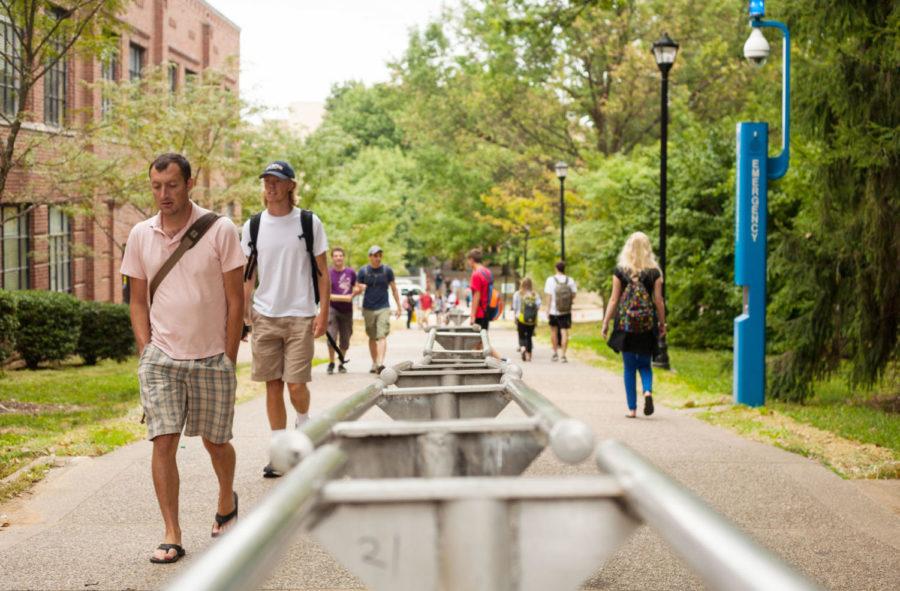Men are the new minority in college
People walk between Lafferty Hall and the Lucille Little Library during UK’s first day of classes in Lexington, Ky. on Wednesday, August 26, 2015. Photo by Adam Pennavaria | Staff
August 28, 2017
In a surprising turn of fate, men are the new minority on college campuses. In the 1970s, male students outnumbered female students 58 percent to 42 percent. Now, that ratio is reversed as more than 56 percent of students are female, outnumbering men by 2.2 million students nationwide.
This difference starts long before move-in day freshman year. Anti-school feelings begin sprouting in boys as early as kindergarten as girls tend to academically outperform boys, especially in reading.
Cost and time are also factors, especially considering the potential weak payoffs. Some men are ready to start working right out of high school instead of going through four more years of not making money. Shorter vocational programs and trade work are more appealing immediately as workers earn more money right away, although in the long-run they earn 56 percent less than those with a bachelor’s degree.
There has also been significantly more effort from colleges and society to encourage girls to go to college. These initiatives have been powerfully effective and should continue, but as college enrollments drop, schools will have to reach out to everyone, even those considered no-brainers.
To read the full article in The Atlantic, click here.











































































































































